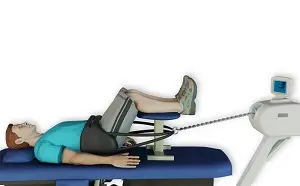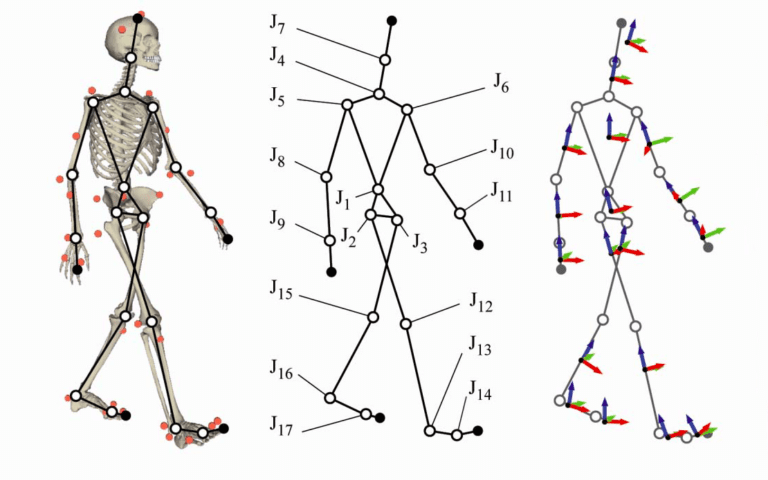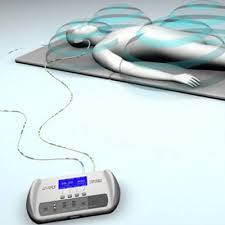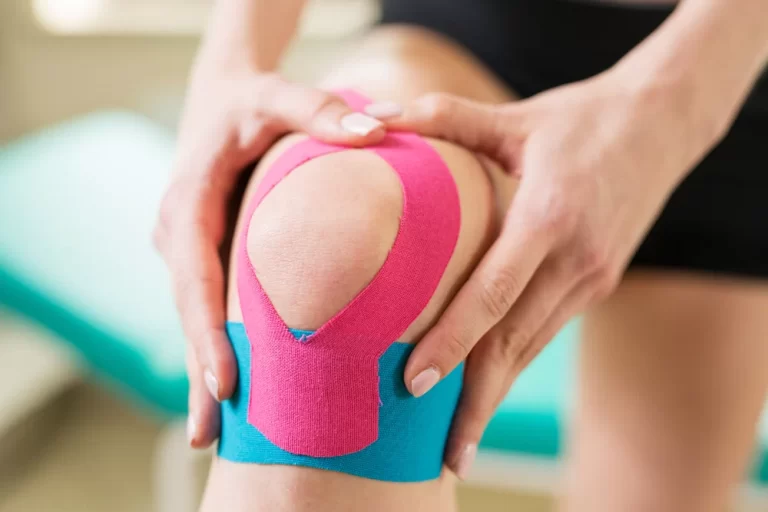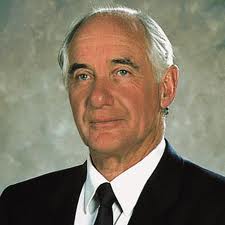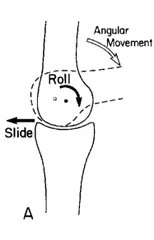Spinal Decompression Therapy: How is it & How does it work?
Table of Contents
What is a Spinal Decompression Therapy?
Spinal decompression therapy is a good, non-surgical, and medicine-free treatment method for people who suffer from chronic neck and back pain which can or can not be caused by disc problems and other spine-related conditions.
Spinal decompression therapy’s goal is to help patients who are suffering from some crippling pain because of bulging, degenerating, or herniated discs. It may also be utilized for the pain management and treatment of some causes of Sciatica, injured or diseased spinal nerve roots, and worn spinal joints.
The importance of choosing between surgical and non-surgical decompression therapy is crucial to understand because surgical spinal procedures are frequently considered a last resort. Spinal decompression therapy is a better treatment option at any stage of back pain. There are two types of decompression theory, Nonsurgical and surgical.
Nonsurgical compression theory
How does it work?
- In this spinal decompression therapy, the spine is stretched and relaxed as an alternative in a controlled manner.
- The theory behind this treatment is that ‘this process provides negative pressure between the discs which is believed to have two potential benefits:
- It pulls the herniated or bulging disc material return into the disc. It encourages and facilitates the passage of healing nutrients into the disc leading to a better healing environment.
- Decompression Therapy typically is made up of a series of 15-20 treatments each lasting for about 20-35 minutes over 6-8 weeks.
- The sessions are conducted in the physiotherapy clinic.
- The patient should not experience any pain at the time or after the decompression therapy, although they should experience a stretch in their spine.
About decompression session
- A spinal decompression table is a primary tool utilized in non-surgical mediation options for spinal decompression therapy.
- There are 2 main types of spinal decompression tables:
- A table with a cable and pulley system that creates a plentiful pull on the person’s body, a Decompression device that has an upper and lower body component, both of which move in a solitary of each other
- The second type of table is much more productive at prohibiting muscle guarding, hence it is broadly suggested for the best possible patient outcomes. at the time of the Spinal Decompression Therapy for low back pain (lumbar spine), the patient stays fully clothed and lies on a motorized table; the lower half of which is portable.
- A harness is positioned surrounding the hips and is devoted to the lower table close to the feet.
- The upper part of the table remains stable in its position throughout the treatment while the lower movable part, to which the patient is harnessed, slides back and forth to give controlled traction and relaxation.
- Once the person is in place, the table program is validated and the two parts of the table start to pull apart from each other.
- The poundage of the pull is based on the type of decompression as well as the physical build of the person and may range anywhere from just 5 pounds for a cervical decompression protocol to 100 pounds or more than this for lumbar decompression on a patient with a larger build.
Surgical decompression theory
How does it work?
Spinal decompression surgeries might be suggested if other methods do not help. According to the National Health Service (NHS), some doctors consider four months after symptom onset the ideal time for surgery if conservative treatments are not effective. For treating stenosis in the lower spine, too many doctors consider surgery appropriate if a person has:
- No significant pain relief after conservative treatment for four to eight months
- Moderate to severe nerve radiation pain or compression of a nerve root without pain
- Pain in the legs that flares when a person walks less than 100 to 200 meters (109 to 219 yards)
- Progressive scoliosis causes worsening symptoms
- Symptoms of cauda equina syndrome, which may cause bladder or bowel dysfunction
- Laminectomy: During a laminectomy, the surgeon removes the back part of a vertebra called the lamina to relieve pressure on the spinal cord.
- Discectomy: During a discectomy, a portion of a disc between the vertebrae is removed to relieve pressure on the spinal cord.
- Spinal fusion: During spinal fusion, 2 or more vertebrae are fused together to prevent movement in a spinal joint.
How do some therapies differ?
The first difference between different decompression therapies is the patient’s position on the table.
- Some machines place the patient in a prone position meaning that the patient lies face down on the table as seen in VAX-D.
- Some machines have patients lying down in a supine position that is patient lying face-up on the table.
- This is seen in DRX9000.
- Sessions can involve additional treatment styles like Electric stimulation, Ultrasound, Cold therapy, and Heat therapy that can be applied at the time or after the decompression procedure.
- Recommendations can also incorporate advising the patient to take up to half a gallon of water daily.
- The patient is suggested to rest, keep an intake of nutritional supplements, and/or do exercises at home to increase strength and mobility.
- A patient undergoing spinal decompression therapy may expect to undergo at least twelve sessions on the decompression table, based on the patient’s diagnosis and response to treatment excluding the follow-up treatments; that can be suggested as per need for the pain management.
Is there clinical evidence behind this?
- While the fundamental theory of Spinal decompression is widely engaged as well grounded, there is a lack of proof supporting this theory as being effective; if the potential risks are put under consideration.
- The evidence to prove; whether spinal decompression therapy is as effective, more effective, or less effective than the less costly manual methods is very limited and consequently, inadequate.
The spinal decompression theory program
The Spinal decompression therapy program includes the following 5 components:
Spinal Decompression Therapy
- As explained above in the article.
Post Spinal Decompression Therapy
- This is important to ensure that the target areas are fully relaxed and pre-conditioned for chiropractic manual treatment.
- It can incorporate massage therapy, dry needling, electro-stimulation, and cold laser.
- These further facilitate blood and nerve exchange into the decompressed region.
Chiropractic Care
- Chiropractic adjustments decrease the spinal decompression program by correcting mechanical and structural misalignments.
- This leads to more productive treatment.
Nutritional Recommendations
- Supplements like Arthrex, Glucosamine, and essential vitamins not only support the repair and restoration of the disc, but they also play an essential role in reducing inflammation which helps give the disc a better environment to heal.
Posture Rehabilitation And Core Strengthening
- Core exercises are frequently advised to reduce pressure and strengthen the muscles and soft tissues holding up the spine.
- Specific exercises, posture rehabilitation, and yoga, unique to every people, are part of the program.
Studies show that continued improvement is seen up to 4 years following the Spinal Decompression Therapy Program. The success rate of this theory is observed to range from 71% to 89%.
When is spinal decompression therapy indicated?
The indications for spinal decompression therapy are usually broad. This therapy is often suggested as an alternative treatment option for:
- Low back pain
- Sciatica (leg pain)
- Neck pain
- All three of these can take place as an outcome of herniated discs, bulging discs, degenerated discs, pinched nerves, and Facet syndrome.
Contraindications of spinal decompression therapy
Stretching the spine to give relief from pain is not an appropriate approach for some patients involving:
- Pregnant women
- Patients with broken vertebrae
- Patients with spinal fusion
- Patients with failed back surgery
- Patients with artificial discs and other implants in their spine
- Patients with Osteoporosis
- Patients having a spinal tumor
- Patients having ankylosing spondylitis
- Patients having osteopenia
- Any condition that needs the patient to take anticoagulation therapy ( blood thinners)
- Patients with neck and arm pain can feel deterioration of their symptoms, in which case the decompression therapy should be straight away discontinued.
The risk factor of spinal decompression theory
Just like any other treatment, Spinal Decompression Therapy comes with its own set of risk factors despite it being a slightly invasive procedure. To avoid these risks, the doctor asks the patient to undergo too many screening tests incorporating a physical exam, MRI, and X-Rays to identify if Spinal Decompression treatments are applicable for the patient. Spinal Decompression Therapy should not be used for a patient who has:
- For pregnant women due to the risk of pressure on the abdomen
- For patients who have spinal instability, like severe osteoporosis or degeneration of the spine
- For patients who have had initial spinal surgery with implantation of screws, metal plates, or similar hardware unless the bone is fused
- For patients with severe nerve damage
- For patients with metastatic cancer (cancer that has proliferation to the bones)
- For patients with Grade three and four Spondylolisthesis
- For the person with a history of aortic aneurysm
- For patients suffering from disc space infections
Pros of spinal decompression therapy
- With every passing single day, Spinal Decompression Therapy is gaining popularity globally at a lightning pace.
- Considering this, it is not surprising to identify that the benefits of Spinal Decompression Therapy may be seen on multiple levels.
Physiological benefits
- Improved the flow of blood and promotes nutrient supply into the disc
- Reduces the intradiscal pressure
- Decrease compression and pinching of nerves
- Reduced disc rehydration
- Prevents the advancement of the herniation
Physical benefits
- A general depletion in pain and better chances of resuming daily activities
- Improves spinal mobility
- Prevents guarding of muscles
- Plays a role in developing core strength
- Improves joint flexibility
- Boosts the immune system
- Prevents new injuries
- Lowers stress levels
- Apart from those above, other benefits that are acquired from Spinal Decompression Therapy comprise the following:
- Spinal decompression makes the spine not so much susceptible to degeneration and breakdown
- It is a non-invasive treatment that does not need any medication and is not very time-consuming
- It gives fast results and many patients have reported pain relief after their first session
- This procedure is much quicker than spinal surgery of any kind and does not have the recovery time connected with surgery either
- As an alternative to temporarily treating the pain with pain medication, spinal decompression gives natural pain relief by reducing the amount of pressure on the spine. This means that the back pain is not just for the moment and goes till the pill lasts, it is eradicated by dealing with the source of the issue
- The patients undergoing Spinal Decompression Therapy do not have to be concerned about compelling painkillers or side effects
- When compared to surgery, it is an exceptionally safe option
- There is no harm in allergic reactions to anesthesia and infections
- The possibility of infections is eradicated through this less-invasive therapy
Cons of spinal decompression therapy
Most people do not feel any major side effects. The most usually reported contraindication of this treatment is a dull, achy soreness for the 1st week or two as the body becomes customary to being stretched and decompressed. In Spinal decompression, the muscles are stretched in a lengthening position which the body is not utilized to. Infrequently, Spinal traction has been reported to cause:
- Muscle spasms
- Shooting pains down the arm and leg
- Other drawbacks of spinal decompression therapy involve the following:
- Lasting relief can not be experienced until the whole therapy is completed, which can take 4 to 6 weeks
- Spinal decompression therapy may get costly because the equipment is very expensive and in most cities, insurance companies do not cover the cost of this therapy.
- This therapy program has been announced to be too time-consuming as the protocol can need as many as 4 visits per week
- There is a theory that it can not be effective in terms of fixing the root cause.
- Some incidents have been reported where the pain decreases for a certain period before resurfacing.
- To avoid any discomfort, the system has immediate stop switches for both, the patient and the operator.
- These switches end the treatment immediately if the patient experiences any improvement in pain or any sort of discomfort at the time of the treatment.
- Apart from the sessions, the Spinal Decompression Therapy Program includes guiding the patient through multiple other ways to facilitate pain loss which helps the patient cover the road to pain-free life much faster.
- The most usual of these involve dietary supplements (multivitamins), improved water intake, and healthy exercise.
- Overall, Spinal Decompression Therapy is think about pretty safe and comfortable.
- So much so, that the patients generally sleep through the session.
FAQ
Spinal decompression works by helping to reduce pressure on the joints and nerves. This is done by increasing the space between the vertebrae or between the vertebrae and nerves. By “pulling” in the opposite direction of gravity to improve space and reduce the pressure we are able to help alleviate our symptoms.
Depending on the cause, an L4-L5 or L5-S1 spinal Disc bulge is mostly treatable without any kind of surgery or injection. The key to recovery is perfect diagnosis followed by corrective treatments that focus on the problem’s root cause. The most common treatment options are Rest with LS Belt, Pain relieving medicine, and Physiotherapy treatment and exercise is the best non-surgical treatment option.
Sleeping flat on the back will help keep the spine aligned and it permits the body to follow its natural curve so you are not putting any unnecessary pressure on the back. To help keep this curve in the most natural position possible put a small pillow under the neck and one under the knees.
Doing gentle activities and exercises will strengthen the muscles that support the spine and decrease pressure on the spinal column. They will also promote flexibility in the spine and can help decrease the risk of a herniated disc from reoccurring.
Gentle activities that may help are;
Pilates.
Yoga.
Swimming.
Walking.
Cycling.
Most (80-90%) cases including bulging or herniated discs will heal within two to four months. This of course based on the severity of the injury, as well as the age and overall health. An important difference is that a herniated disc is a permanent injury that generally results in chronic, recurring pain.


